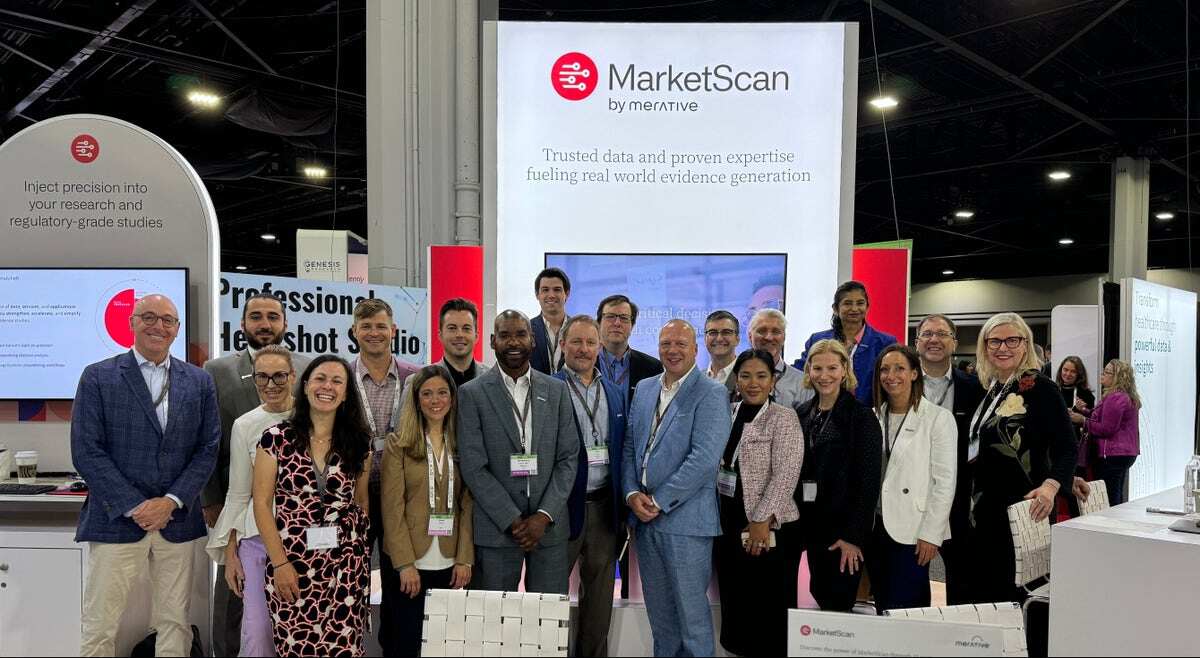Three real-world data research and regulatory trends to watch in 2024 and beyond

The Professional Society for Health Economics and Outcomes Research, known as ISPOR, recently concluded the 2024 global conference in Atlanta, Georgia. Conference attendance continued its post-pandemic recovery with high attendance among leading real-world data (RWD), health economics and outcomes research (HEOR), and epidemiology research leaders, including regulators, policy makers, patient advocacy groups, academics, and other key stakeholders. This year, more than 70 presentations leveraged MarketScan data across a variety of healthcare topics. As RWD subject matter experts and decision makers from around the world met to discuss the latest topics in RWD-related policy and research, our MarketScan team took note of a few key takeaways:
Ongoing domestic impact of Inflation Reduction Act
Consistent with trends from last year’s ISPOR conference, multiple sessions brought together researchers, decision makers from regulatory agencies, and pharmaceutical manufacturer leaders to discuss changes in the regulatory landscape. There was much discussion about the ongoing negotiations surrounding the initial 10 drugs for maximum fair price (MFP) regulation as part of the Inflation Reduction Act (IRA). Although representatives from pharmaceutical manufacturers shared frustration about the negotiation process for the first 10 candidates, the Centers for Medicare and Medicaid Services (CMS) prepares to release the next 10 drugs targeted for cost-reduction.
Early feedback from negotiations raise questions around the effectiveness of eventual implementation. Researchers seemed skeptical that the goal of reducing the costs of key medicines for Medicare enrollees would be successful based on ongoing RWD driven analyses. Concerns were raised about how the use of 2022 dollars to implement changes in 2026 seemed to ignore how rapidly the market can change, including the example of generic biosimilar uptake that may have a larger market impact on driving medication affordability than price regulations.
Ongoing confusion and concerns around calculation of MFP and lack of transparency in the negotiation process were topics of strong debate across various ISPOR sessions. Without further clarity, there remain concerns that pricing hurdles and the burden imposed by IRA could impact the decision-making process of companies, limiting the launch of products aimed at older Americans. However, there was acceptance that the process would continue and that ongoing advocacy for insight into early decision-making processes remains crucial.
Generative artificial intelligence and real-world data
There was heavy emphasis on the use of cutting-edge technology in the life sciences space, such as generative artificial intelligence (AI). Many sessions focused on the future promises and potential potholes to be aware of when considering AI.
Real-world examples of generative AI reviewed the use of variable selection and feature creation for economic evaluation and modeling, summarizing documents with large text fields, and market access research in product targeting. Hopes for generative AI continue to lag behind current technology, with examples such as the difficulty of identifying patients with multiple diagnostic and treatment-specific criteria using free-text search in medical records. Overall strengths of AI in RWD research included generating initial ideas and first drafts, optimizing model selection, evaluating estimation techniques for final analyses, and summarizing complex documents and reports. That said, the consensus is that there will always be a need for human oversight and input because humans excel at understanding the complexities of health and healthcare systems and ensuring clear communication based on findings.
While technology continues to evolve, researchers discussed early attempts to measure equity and bias in generative AI as it relates to patient reported outcomes (PRO), patient satisfaction, and the importance of ensuring equity in the development of advanced models. The technology driving generative AI continues to advance along with more complex data inputs. The role of healthcare researchers in the evolution of AI in real-world data use cases will be in understanding its uses, evaluating tests cases, and ensuring accuracy, equity, and trust in generative AI results.
Data standardization
Data standardization, as it relates to the shareability of data across contributors and the standardization of data for regulatory submission, was touched on as issues affecting both the United States and European markets. The growing uptake of the open-source Observational Medical Outcomes Partnership (OMOP) framework was noted as a key benefit in the use of DarwinEU, a federated network of approximately 20 data sources covering 13 contributors from across the European Union. Adoption of OMOP was also cited as making the delivery of standardized data reports, including to regulatory authorities, more efficient. Other open-source approaches, including the Observational Health Data Services and Informatics initiative, have formed around storing, sharing, and mining data to facilitate data synchronization. However, data source standardization mandates are unlikely to come from US regulatory agencies; US regulators state that their primary focus is on the quality of the reported data, regardless of data format, language, or other characteristics. The different approaches between US and ex-US agencies was acknowledged as a pain point as multi-national pharmaceutical companies must contend with different regulatory environments. With demonstrated successes in data standardization and synchronization, innovation continues to come from open-source initiatives rather than regulatory oversight.
In summary, the 2024 ISPOR Global conference reminded attendees of the rapidly changing data and policy environments affecting a broad swath of RWD researchers, academics, decision makers, regulators, and advocacy groups. With the ongoing evolution of RWD sources and usage innovation, it’s safe to say the future of RWD research is bright. As researchers and decision makers continue to innovate in creative ways to glean deeper insights using RWD, healthcare providers and patients can look forward to evidence generation that supports improved health outcomes and quality of life for generations to come.
Our MarketScan team is excited to continue leading the charge in RWD research and real-world evidence generation. We have a passion for answering the most complex healthcare questions and are immensely proud that over 4,500 peer-reviewed publications rely on MarketScan data.
Related Articles

HEOR explained: Improving healthcare decisions with real-world evidence
How longitudinal closed claims data are advancing regulatory, epidemiology, and...
By Liisa Palmer | 4 min. read

Behind the posters: Exclusive insights from MarketScan researchers
Our MarketScan clients and researchers are fueled by curiosity and a passion to...
By Merative | 5 min. read

Mortality data: Driving health research forward
Learn how the MarketScan Mortality Database can help generate insights, examine...
By Liisa Palmer | 2 min. read
Ready for a consultation?
Our team is ready to answer your questions. Let's make smarter health ecosystems, together.
